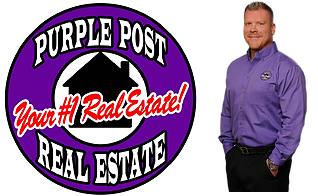By SCOTT SHEWFELT, Capital News Service
WASHINGTON - Maryland's subprime loan foreclosure rate of 2 percent for the last quarter of 2006 was among the lowest in the country, bucking the national trend toward alarming rates.
Nationally, the subprime foreclosure rate spiked .67 percent to 4.5 percent late last year, the largest jump since 2000, according to the Mortgage Bankers Association.
"We've been a little more fortunate," said Tom Shaner, executive director of the Maryland Association of Mortgage Brokers. "People here are generally doing better."
Maryland is a high-income state, houses are more expensive and employment is solid, said chairman of the Sage Policy Group Anirban Basu.
Subprime loans are given to those with blemished credit, with one in four going to a first-time homebuyer. Anything from missed car payments to delinquent cell phone accounts can put a borrower in this market, said Mike Fratantoni, senior economist with the Mortgage Bankers Association.
Even though Maryland is insulated from the worst fallout from the proliferation of subprime loans in the past few years, it will still feel some consequences.
"People in Maryland should care about the rise because the greater the deterioration in the subprime market, the higher the level of foreclosures locally and nationally," Basu said, adding foreclosures put more houses into the market without the demand, which suppresses home prices.
These foreclosures also hurt lenders. To counteract any financial hit, lenders will try to clean up this "subprime slime," with tighter credit standards and higher interest rates, Basu said.
As lenders do this, it can price people out of the market or dissuade them from entering it all together. For anyone in Maryland looking to borrow money to buy a home, expand their home or to sell a home, higher interest rates are not a pretty sight, Basu said.
"The last hurrah in the housing market was on the back of the subprime," said Christian Weller, senior economist at the Center for American Progress.
Maryland had the 46th-lowest subprime loan foreclosure rate, well behind Ohio, Michigan and Indiana, which were the top three in the Mortgage Bankers' survey. Nearly one out of every 10 subprime loans issued in these states in the last three months of 2006 ended in foreclosure, the survey found.
Unemployment levels are high in these states, but "the rise in mortgage delinquencies and foreclosures is not due to unemployment," Basu said. "Job growth is not slowing, the strength of the job market is holding us together."
"It's the Jenga tower effect," Weller said. "You know the bottom is being pulled out, but you're not sure when the whole thing will fall."
Contrary to what the Jenga slogan suggests, a slumping subprime mortgage market is anything but "edge-of-your-seat fun for all ages."
There is a whole generation of lenders who came into the industry with the housing boom beginning in the mid-1990s and who have never seen a downturn, Weller said.
During this boom, there was a lot of money chasing too few good opportunities, which gave the lender a free rein, Weller said.
Subprime lenders faced greater risk because their borrowers' credit histories were inferior, but potential rewards were great because they charged the borrower higher-than-prime rate, Basu said.
"You have a whole industry being professional optimists," Weller said. "Both the lender and the borrower have clearly underestimated the risks."
It's simple market psychology, Weller said, anytime exuberant expectations are met, everyone thinks it can only go up.
Within the subprime market, there are three standard mortgages: fixed rate, adjustable rate and hybrids. In 2006, 67 percent of the subprime mortgages in Maryland were adjustable or hybrid, Fratantoni said.
Most hybrids have an initial fixed rate for two years before switching to an adjustable rate. Bonuses can be attached for prompt payments that can eventually qualify the borrower for a prime rate mortgage, so they can act as a credit repair tool, Fratantoni said.
Bonuses are great, but borrowers who end up in the subprime market and who fail to fully understand the options, can fall victim to predatory lenders who will pound them with high fees and steep penalties, Weller said.
These overaggressive lenders can increase the likelihood of foreclosure, Shanner said, but one of the biggest problems with these loans is a lack of housing knowledge from buyers.
"'I've had people after buying a house, call me and ask where they pay the rent," Shanner said.
"Lenders have been aware of the issues and trying to use caution" said Shanner, "and we're telling them, but they still want the house."
People were so enamored with low interest rates that they leveraged themselves to the hilt—and they weren't just buying houses. They were buying flat-screen televisions to go in them, Basu said.
"Contrary to the American dream, for the first time we are hearing people say, 'You aren't ready to buy a house,'" Shanner said.
Buyers need more education, both Shanner and Weller said.
"And that doesn't just mean giving someone 50 pages of paper and asking for a signature," Weller said. "With the frenzied pace of these mortgages and the market . . . something's got to give, and quite frankly it's been time with the client."


